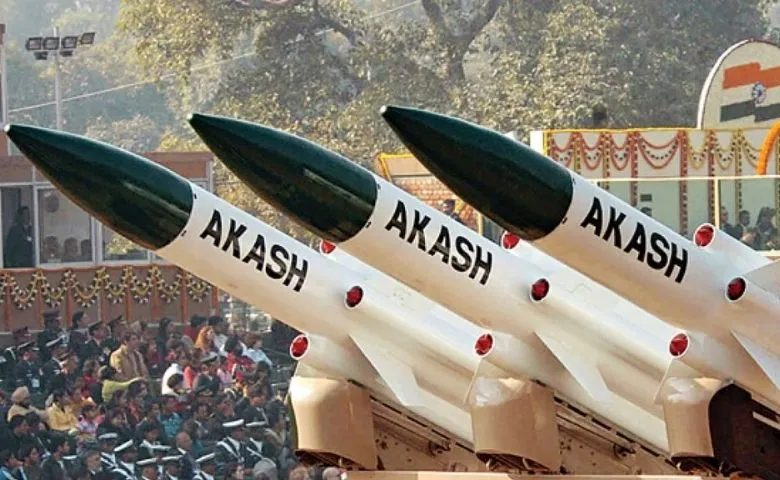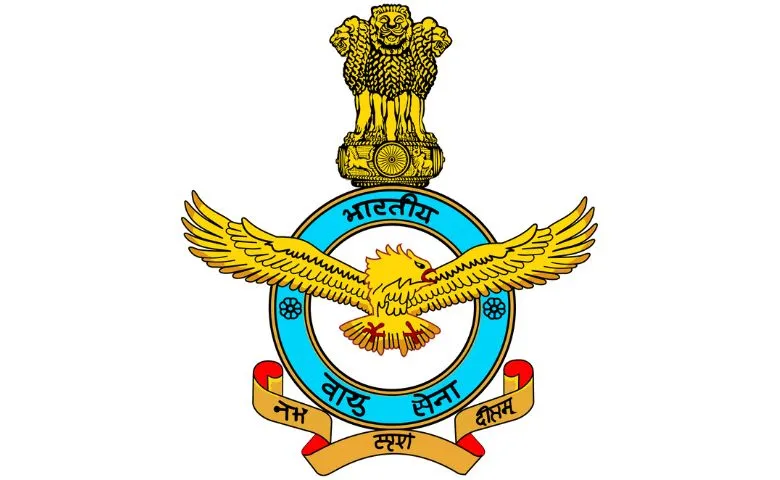Indian Air Force (IAF) is the air arm of the Indian Armed Forces.
It stands on fourth position amongst the air forces of the world. Its primary mission is to ensure Indian airspace safety and conduct aerial warfare during armed conflict.
The Indian Air Force was officially established on 8 October 1932. It worked as an auxiliary air force of the British Empire. It bravely fought in World War II and was honored with the prefix of Royal.
After India gained Independence in 1947 and became Republic in 1950, the prefix of Royal was removed.
Since 1950 IAF has been involved in four wars with neighboring Pakistan and China. Aside from wars IAF was also included in Operation Vijay, Operation Meghdoot, Operation Cactus, and Operation Poomalai.
They have also participated in the United Nations Peacekeeping Force.
The Supreme Commander of the Indian Air Force is the President Of India.
The IAF contributed in the wars and helped India to win wars too.
First Kashmir War or Sino- Indian War
Border Disagreement between India and China started the war. It was officially called the Sino- Indian War.
During the war, military planners didn’t fully utilize the IAF against Chinese forces.
India lost the war which resulted in a significant amount of advantage to the Chinese especially in Jammu and Kashmir.
Second Kashmir War
Three years after the Sino-Indian War, Pakistan launched Operation Gibraltor in 1965.
They started a rebellion against Indian rule in Jammu and Kashmir. Later it was known as the Second Kashmir War.
This was the first time when IAF actively engaged an enemy air force.
They carried out independent raids against Pakistani bases. But the bases were situated deep inside Pakistani territory, which made IAF fighters vulnerable to anti-aircraft fire. At that time PAF (Pakistan Air Force) had the technical superiority against IAF.
Despite the disadvantage the IAF prevented the PAF from gaining air-superiority over conflict zones.
When the war ended, IAF lost 60-70 aircraft while PAF lost 43 aircraft.
After the 1965 war, the IAF underwent many changes to improve its capabilities. In 1966, the para-commando regiment was created. The IAF inducted 72 HS 748s to improve its logistics supply and rescue operations ability.
The HS-748s were built by Hindustan Aeronautics Limited (HAL) under license from Avro.
India wanted to attain indigeneous fighter aircraft. So, HAL made HF-24 Marut which were designed by German aerospace engineer Kurt Tank.
The HAL HF-24 Maruts were the first indigeneous fighter jet to enter service with the IAF.
HAL also developed an improved version of Folland Gnat known as HAL Ajeet. The IAF also inducted Mach 2 capable MiG-21 and Sukhoi Su-7 fighters.
Bangladesh Liberation War
The independence movement in East-Pakistan led to the Bangladesh Liberation War between India and Pakistan. On 22 December, 1971 before the declaration of war PAFs F-86 attacked India and Mikhti Bahini positions at Garibpur near the International border. Two of the four jets were shot down.
India declared war against Pakistan following massive strikes by Pakistan again on IAF installations in Srinagar, Ambala, Sirsa, Halwara and Jodhpur.
The IAF didn’t suffer significantly as the leadership had anticipated such a move and precautionary measures were taken.
The IAF supported the Indian Navy in operations against Pakistan and the Maritime Security Agency in the Bay of Bengal and Arabian Sea.
On western front, the IAF destroyed more than 20 Pakistani tanks, 4 Apcs and a supply train during the battle of Longewala.
By the time Pakistani forces surrendered, the IAF destroyed 94 PAF aircraft. On the ground Pakistan suffered most with 9,000 deaths and 25,000 wounded while India suffered 3,000 deaths and 12,000 wounded.
“The team of EncycloIndia salutes the heroes who were martyred for mother India”
-Team EncycloIndia
Moreover Pakistan also faced the loss of many armored vehicles during the war and faced a major defeat.
Kargil War
On May 4, 1999, the IAF participated in the Kargil war to provide close support to the Indian Army. The IAF strike was code named Operation Safed Sagar.
The strikes were launched on 26 May, where the IAF struck an infiltration position with fighter aircraft. Initially MiG-27s carried out offensive roles the MiG-29s provided fighter cover. They also deployed radars in vast numbers to monitor the Pakistani military movements.
The IAF suffered its first fatality on 27 May when they lost a MiG-21 and MiG-27.
They withdrew helicopters from offensive roles when a Mi-17 Helicopter was shot down by the Stinger Missiles. They took a precautionary measure against the threat of the Man-Portable-Air-Defense-System (MANPAD).
The IAF used Mirage-2000s in the offensive roles as it had better performance in high altitudes and it was capable of countering MANPAD.
They successfully targeted and destroyed enemy camps and completely disrupted their supply chains. They defended Tiger Hill and recaptured the territory.
By 26 July 1999, Indian forces successfully repelled the Pakistani forces from Kargil.
2019 Balakot Airstrike
After the 2019 Pulwama attack that was carried out by Jaiesh-e-Mohammad (JeM) established in Pakistan. In the cowardly attack, sucide bombers blasted themselves with the CRPF bus resulting the death of forty CRPF soldier. The soldiers were martyred in that cowardly attack. After the Surgical Strike, Pakistan was hoping for another operation by the Indian Army.
But this time the Indian Air Force took the initiative for the revenge of our martyrs.
A group of 12 Mirage-2000s fighter planes of the Indian Air Force carried out airstrikes on the JeM bases in Chakothi and Muzaffarabad in illegally occupied Kashmir.
After the attack Indian officials announced that many terrorists were killed in the airstrike.
2019 India-Pakistan Standoff
After the airstrike on the Jaish-e-Mohammad camp in the illegally occupied Kashmir of Pakistan.
A group of PAF’s Mirage-5 and F-16 tried to conduct an airstrike but the IAF intervened with its MiG-21 and Sukhoi Su-30 MKI. IAF shot down their F-16 plane by the MiG-21 which was piloted by Abhinandan Varthaman. IAF’s MiG-21 crashed in PoK and the pilot was captured by Pakistan. Later the pilot was returned to India by Pakistan per the Third Geneva Convention.
Pakistan denied the use of a F-16 plane in the failed airstrike but the IAF presented the remnants of the AMRAAM missile which can only be carried by F-16 plane.
Indian Air Force’s Aircraft Inventory
The IAF has aircraft of Indian, Russian, British, French, Isaraeli and US origins. The International Institute of Strategic Studies provides an estimate of 1,850 aircraft in the inventory of the Indian Air Force. They also said that IAF has approximately 900 combat capable fighter aircraft.
Multi-role fighter and Strike aircrafts


- Sukhoi Su-30 MKI
- Mikoyan MiG-29
- Dassault Mirage 2000
- HAL Tejas
- SEPECAT Jaguar
- Mikoyan-Gurevich MiG-21
Aircrafts for training crews
- AEW&C Embraer ERJ145
- EL/W- 2090 Phalcon
Aerial Refueling
- The IAF has six Ilyushin IL-78 MKI for Aerial Refueling
Transport Aircraft

- Ilyushin IL-76
- C-17 Globemaster
- C-130J Hercules
- Antonov An-32
- Dornier An-32
- Boeing-737
- Embraer ERJ-135
Helicopters
- HAL Dhruv
- HAL Chetak
- HAL Cheetah
- Mil Mi-8
- Mi-171V
- Mi-17 1V5

- Boeing AH-64E Apache
- HAL Light Combat Helicopters
- HAL Rudra
- CH-47 F Chinook

- Mi-26
- Mi-85
Missile System
Surface to Air Missiles
- S-125 Pechora
- 9K33 Osa-AK
- 9K33 Igla-1
- Akash

- SPYDER
- MRSAM
Ballistic Missiles
- PRITHVI- II




